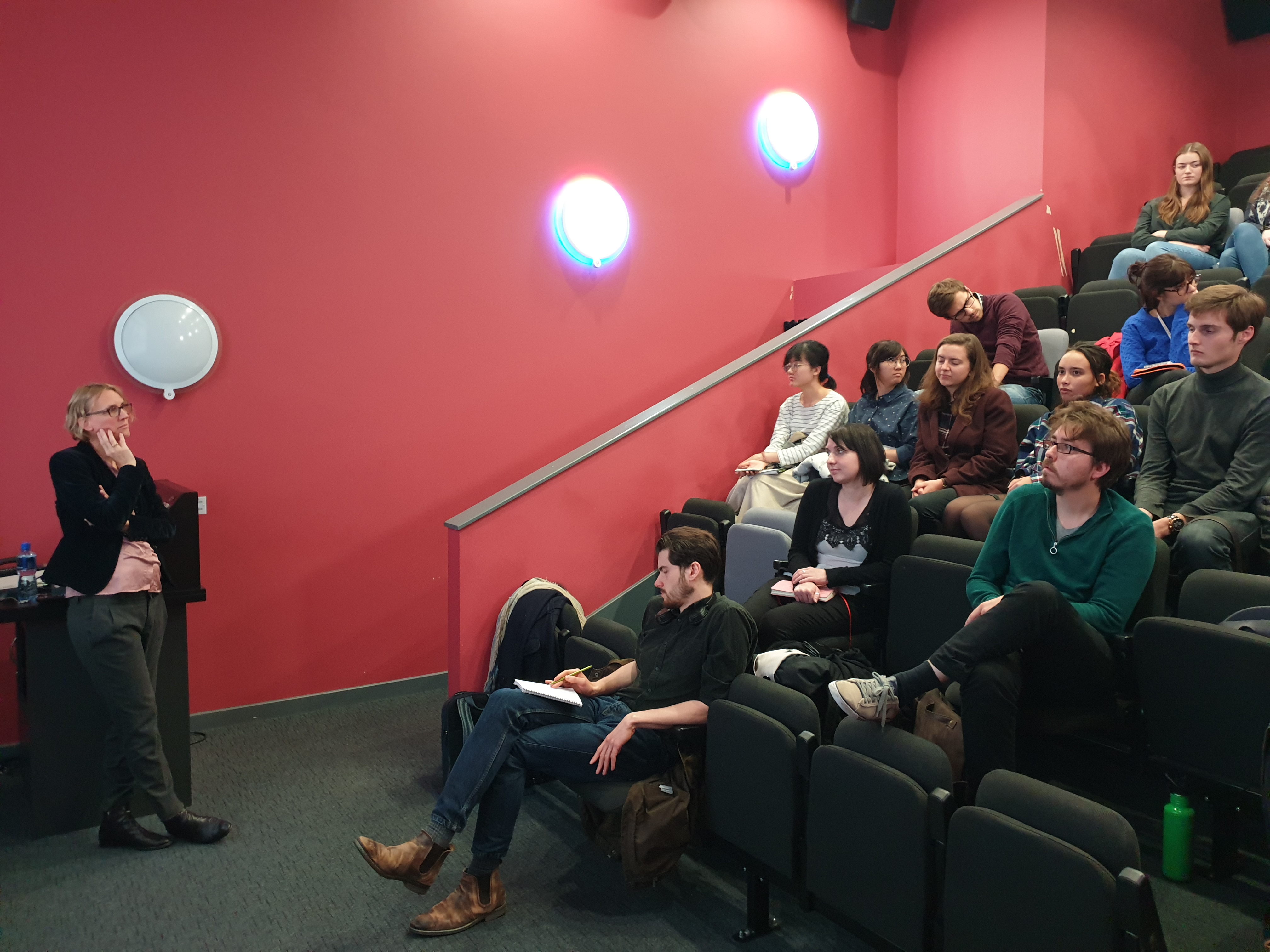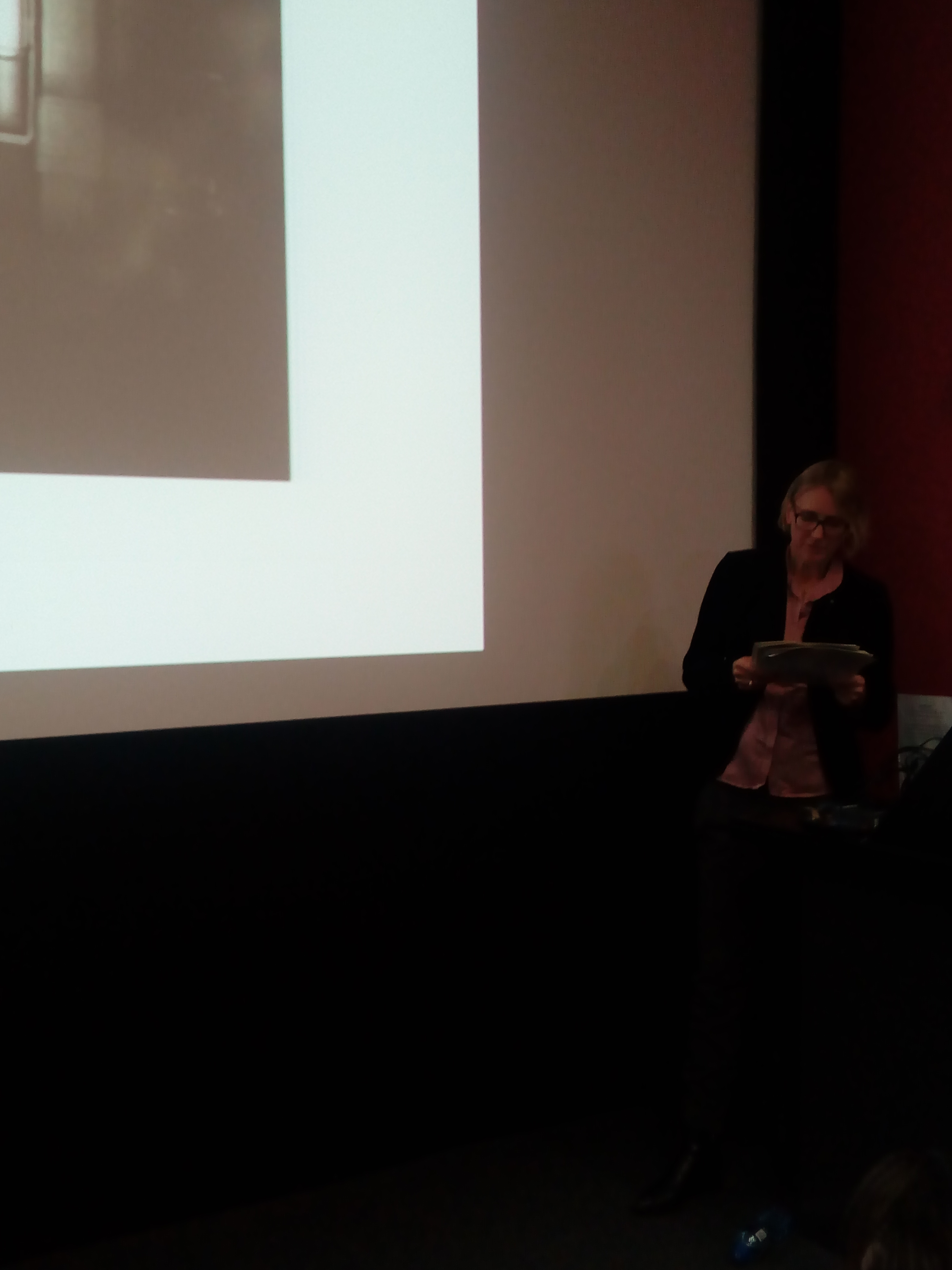
On 23 October 2019, the Film, Media and Culture Research Group was delighted to host Professor of Film and Media Studies Kathrin Fahlenbrach (University of Hamburg) for a research seminar at the University of Kent. Fahlenbrach’s talk, titled ‘Audiovisual Metaphors and Embodied Meanings across Film, Television, and Video Games’, explored the functions of metaphorical mapping across a range of different media. Fahlenbrach noted that some recent approaches to metaphorical meanings in media tended towards overgeneralisation, with little sensitivity to the ways in which media differ from each other. Through analysis of specific examples from film, television, and video games, Fahlenbrach identified aspects of metaphorical mapping that are more ‘universal’ across media as well as meanings that are more medium-specific and determined to a greater extent by the different global structures of these media. Fahlenbrach’s approach stresses two important features of metaphor in moving image media. First, they are audiovisual; the effective use of metaphors in a medium like film involves the fusing of sound and image in a way that guides our perception and comprehension. Second, metaphor comprehension is embodied; the way in which we make sense of abstract concepts is through mapping more concrete bodily experiences onto them (e.g. Affection is Warmth, Importance is Size, Similarity is Proximity, and Happy is Up).
Fahlenbrach’s work leads a recent wave of scholarship within film and media studies that applies conceptual metaphor theory to moving image media. Classical theories of metaphor typically hold that metaphor is primarily a matter of language and represent instances where words are used beyond their normal, literal everyday usage in a way that is somehow novel or poetic. Thought of in this way, metaphors are, for the most part, ornamental features of language. Against this tradition, George Lakoff and Mark Johnson’s conceptual metaphor theory claims that metaphors are not just related to language, but are instead about thought. On this view, metaphors are a fundamental way in which we conceptualise and understand our world; expressions are used metaphorically in order to conceptualise a wide range of abstract and mental phenomena. Conceptual metaphor theory has its basis in cognitive linguistics and, as a consequence, has largely been used to understand manifestations of metaphors in language. However, if we accept the claims of conceptual metaphor theory, then we accept that metaphorical thinking goes beyond just language and bears upon comprehension, perception, and expression in a wide range of domains. The work of Fahlenbrach and other scholars thus seeks to go beyond the study of language and consider what conceptual metaphor theory might bring to the study of how different media express abstract and complex ideas in ways that are more concrete and based in bodily experience.
Fahlenbrach’s talk prompted a wide range of questions from the audience, including, but not limited to, the role of intention in metaphor, the relationship between gender and metaphor, and the explanatory power of conceptual metaphor theory for film and media studies. Our thanks to Kathrin for her thought-provoking talk and her engaging responses to some searching questions from the audience and members of the Film, Media and Culture Research Group!
Written by: David Brown



